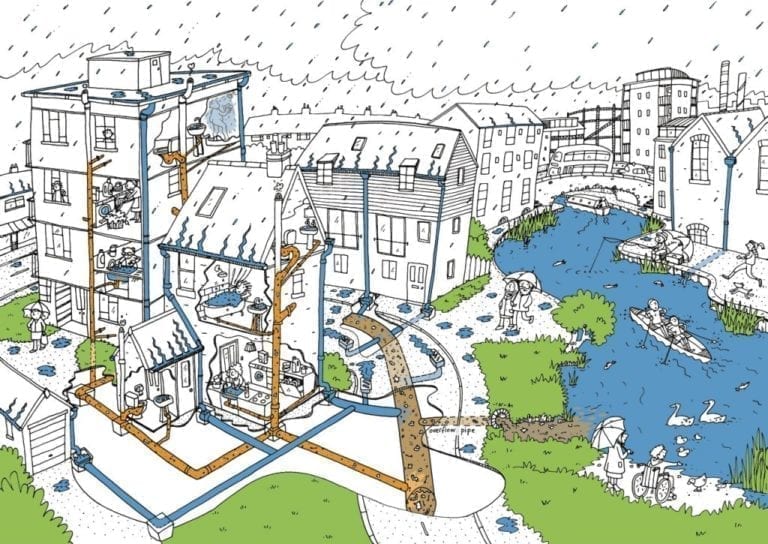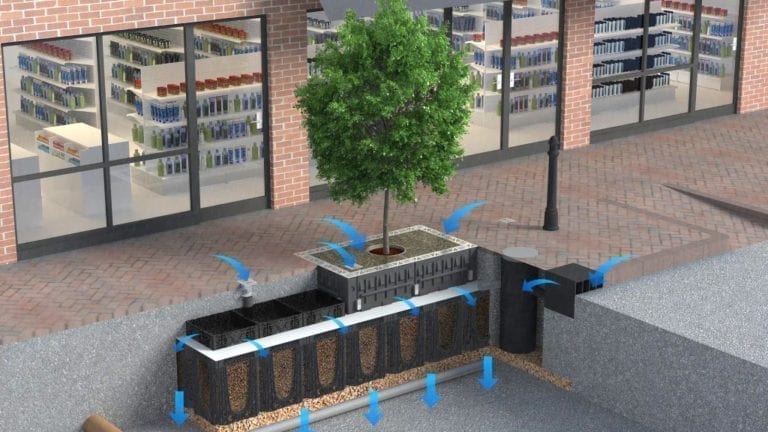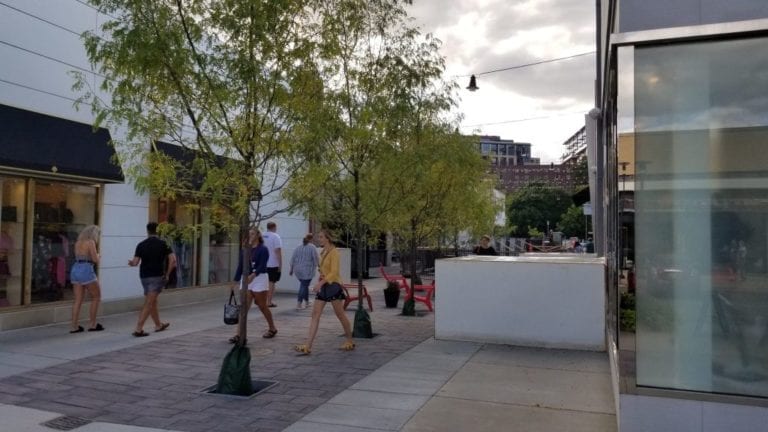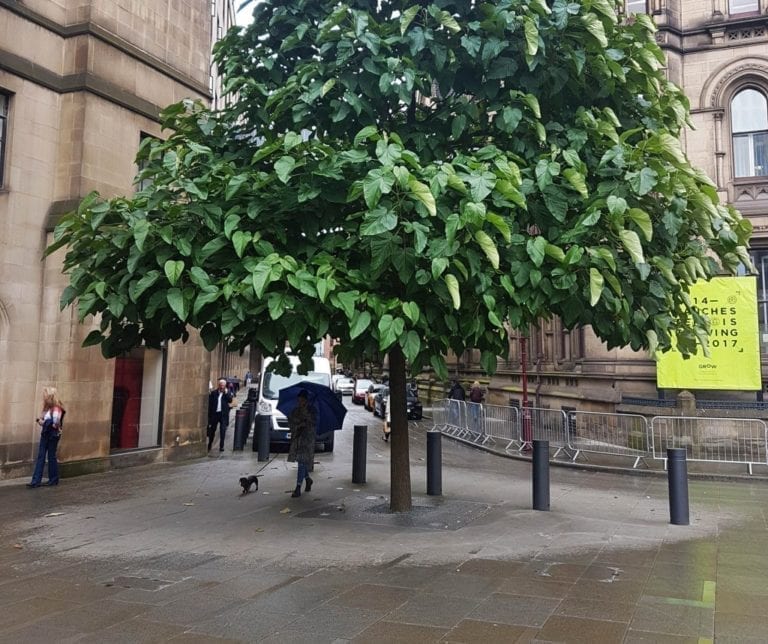Stormwater management in inner cities has become an increasing issue in recent times, traditionally relying on grey infrastructure wastewater collection systems. Combined sewers systems carry both stormwater and wastewater from residential, commercial and industrial sources and are often of older design and inadequate for current levels of inner-city development. Combined sewer overflows are frequent and often result in untreated sewage being released into water courses.

Separate storm water management systems may be able to cope better with quantities of stormwater, however, these are still often being discharged into water courses along with high levels of pollution from highways.
The rapid increase in urban development has led to a proliferation of impervious surfaces resulting in very high levels of stormwater runoff reducing substantially the amount of water losses though interception and infiltration as found in greenfield sites.
Attempt to improve grey infrastructure systems is both complex and expensive and the hydraulics of wastewater collection and conveyance are far from straightforward and the ongoing cost of sewer system management is very high.
Recently, awareness of the use of green infrastructure has been increasing and although would not be able to replace grey infrastructure systems, can substantially compliment it, reducing run-off rates and saving on ongoing maintenance costs. Awareness of the value of trees in stormwater management has increased and how trees can provide alternative pathways for urban stormwater via a broader range of moisture losses from the urban hydrological cycle.

An urban forest is defined as including all trees within an urban area both in public and private land and including both planted and naturally established trees. In urban systems where run-off volume is challenging to manage, trees can contribute significantly by routing rainfall to various components of the hydrological cycle including canopy interception, external stemflow, improved infiltration and possibly deeper percolation and water table management.
Canopy interception is the sum of water stored in tree canopies and evaporated from tree surfaces less water lost through external stemflow i.e. water running down the tree stem, and through fall of water that drips through canopy when saturated. Canopy interaction is therefore a vital facility for reduction of stormwater runoff.

Where canopy cover is low in urban areas, the amount of interception is substantially lower. For example, an inner city area with 14% canopy cover may only intercept as little as 1.8% gross annual precipitation whereas urban areas with relatively high canopy cover such as over 40% cover can provide interception of approximately 20%.
Different tree species also provide very variable interception capacities with study demonstrating that conifers with a very dense leaf area index are able to intercept more stormwater than broadleaf trees. Also the factors influencing performance of trees in stormwater management are very complex including the tree species with leaf morphology and area index, atmospheric conditions affecting moisture potential and vapour pressure deficit, soil type including rooting volume, water holding capacity and most importantly, sub surface permeability and water table levels.

In recent years GreenBlue Urban have been leading the development on the use of tree pit systems for not only the establishment of trees in hard landscape but also for stormwater management. Tree pit soil cells are designed to allow for ground infiltration into the uncompacted soils allowing for attenuation and infiltration into the permeable sub surfaces as found in greenfield sites.

Typically, 50m³ of linked tree pits with an uncompacted soil porosity of 48% at saturation would hold 24,000 litres of stormwater. Combined with a permeable substrate, the saturation level would reach soil field capacity between 12 and 24 hours depending on the tree soil permeability.
A key consideration with stormwater management, when using trees and soil cell structures is that of pollution mitigation. Stormwater run-off, particularly from roads can contain high levels of pollution including hydrocarbons, suspended solids and heavy metals. The soil infrastructure including bacteria, micro-organisms and fungal mycelium provides a highly effective medium for pollution mitigation not found in grey infrastructure stormwater systems.
To conclude, the establishment of trees in urban areas with RootSpace soil cell systems provides significant benefits and contributes substantially to stormwater management complimenting grey infrastructure systems very successfully and reducing run off rates.
GreenBlue are proud to offer a wealth of information relating to trees & SuDS, a number of case studies, a dedicated CPD offering along with an exciting soon to be launched product that will enable and simplify stormwater run-off.
